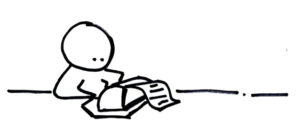A concise recap of types of dashes
First, a quick summary on how to use dashes in formal writing:
Dash/Hyphen – use to connect words e.g. ‘well-known’.
En dash – to show a range of dates (basically, replaces the ‘to’) e.g. Profits increased from November – October that year.
Em dash — use like brackets/ellipses.
But some styles prefer to use an en dash or an em dash (as long as you remain consistent in the same piece of writing).
Em dash rules
Okay, let’s focus on the em-dash —
—To emphasise an extra thought or idea that is an addition to the text and will make sense without it (like brackets).
—To replace a colon at the start of a list. For example, I started this list with an em dash, although it is rarely used in business writing where a colon is preferred.
—To replace a bullet point list (again a matter of preference).
—And finally, to replace a pause indicated by an ellipsis (…) in speech. This is therefore mostly used in creative writing.
When to use the em dash in business writing
So a quick glance above indicates that the use of the em dash in business writing should be restricted to an aside that you want to strongly emphasise, unless you use em dashes throughout instead of brackets. Keep it simple, stick to that rule and you can’t go wrong — or can you?
A matter of taste
Some people avoid the em dash because if brackets are like a statement dashes shout. In addition, using an em dash at the end of a sentence — as an aside — can look sloppy in formal writing, while it works well in creative writing. Dashes can be used for emphasis like brackets, but it depends on your reader. If you consistently prefer to use dashes instead of brackets that’s fine; alternatively, use occasionally for extra emphasis in a business document.
When it comes to spacing, usage can differ between offices and publishers. The older style was to leave no spaces, the modern style is to use spaces. Also American style is to have no spaces around the dash, while the British style is to use space (however publishing houses differ in their preference). You might also have noticed in writing that sometimes the dash appears to be longer than usual. In these cases, the simplest rule to follow is to pick the style you prefer and stick with it, and to pay attention to in-house style.
The most important, thing to take away from this article is to be consistent — whichever rules you choose to follow.
Who is Emma?

Emma is a proofreader with 18 years of writing experience with businesses, academics and creative writers. She obtained a Creative Writing MA (St Andrews University) and a PhD in Storytelling (Warwick University). Then set up her own proofreading business and became a published author of fiction as well as academic literature such as Young People, Learning & Storytelling (Palgrave Macmillan).

0 Comments